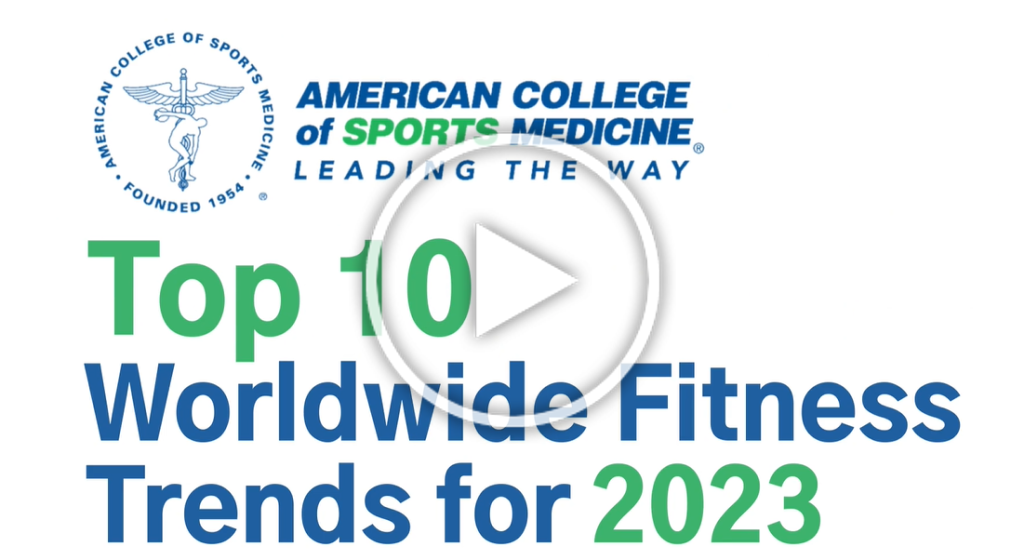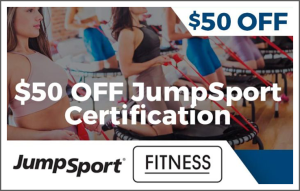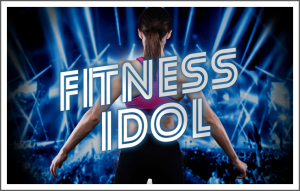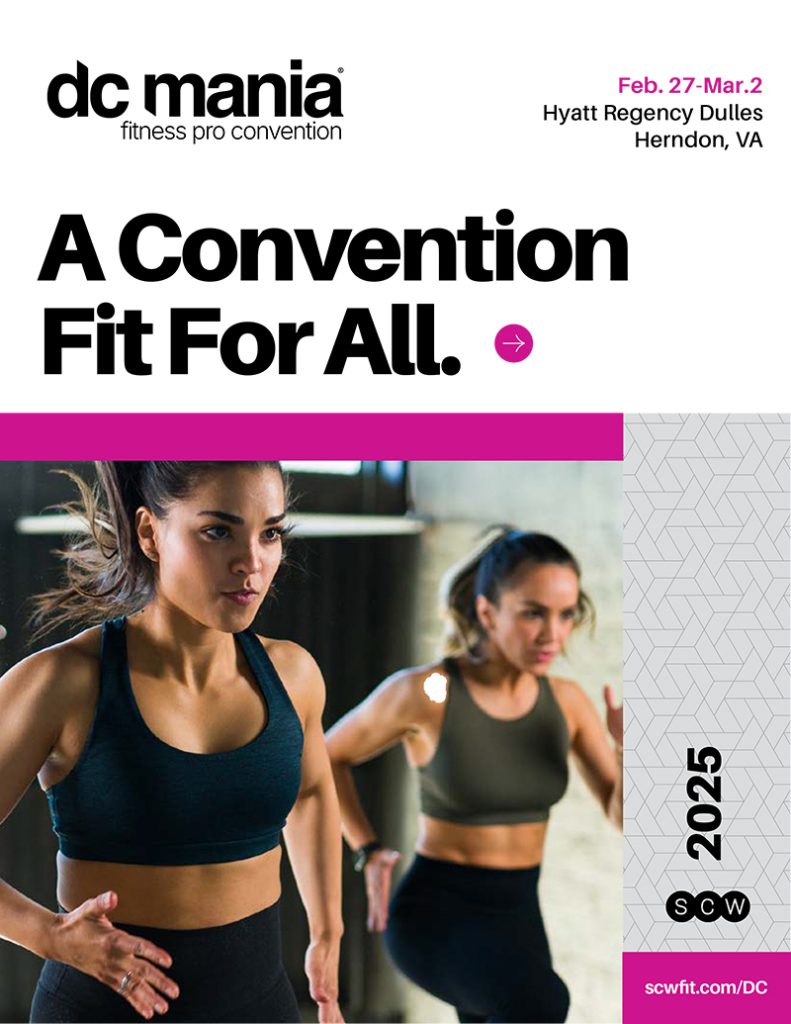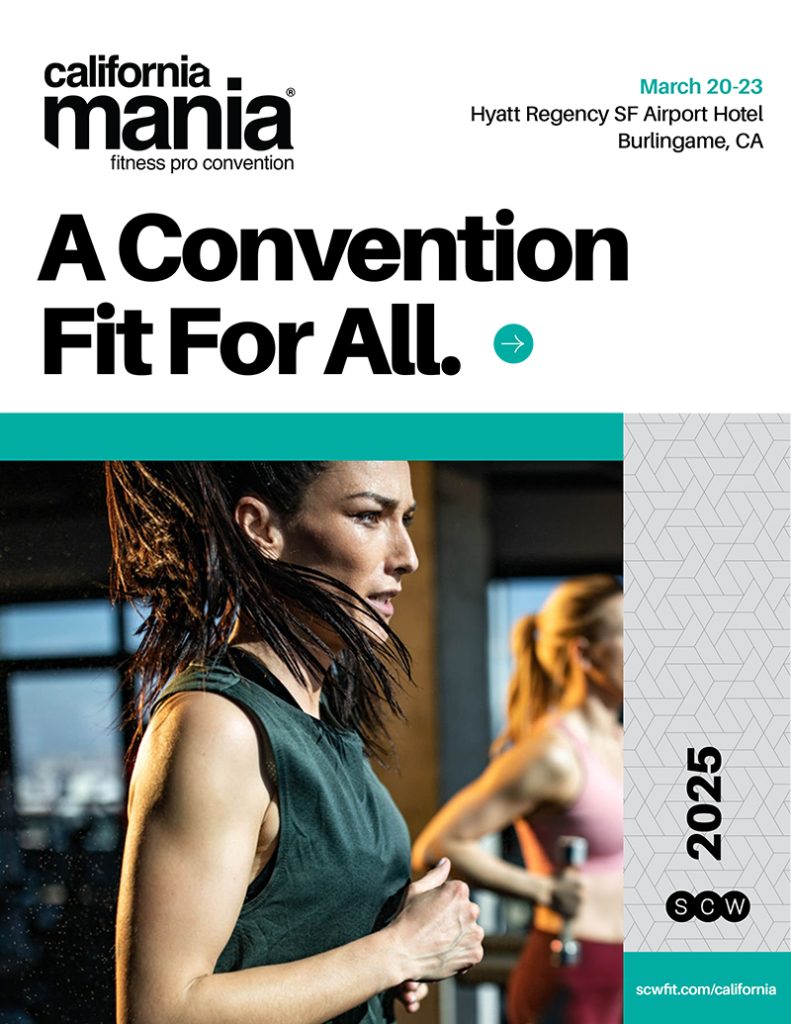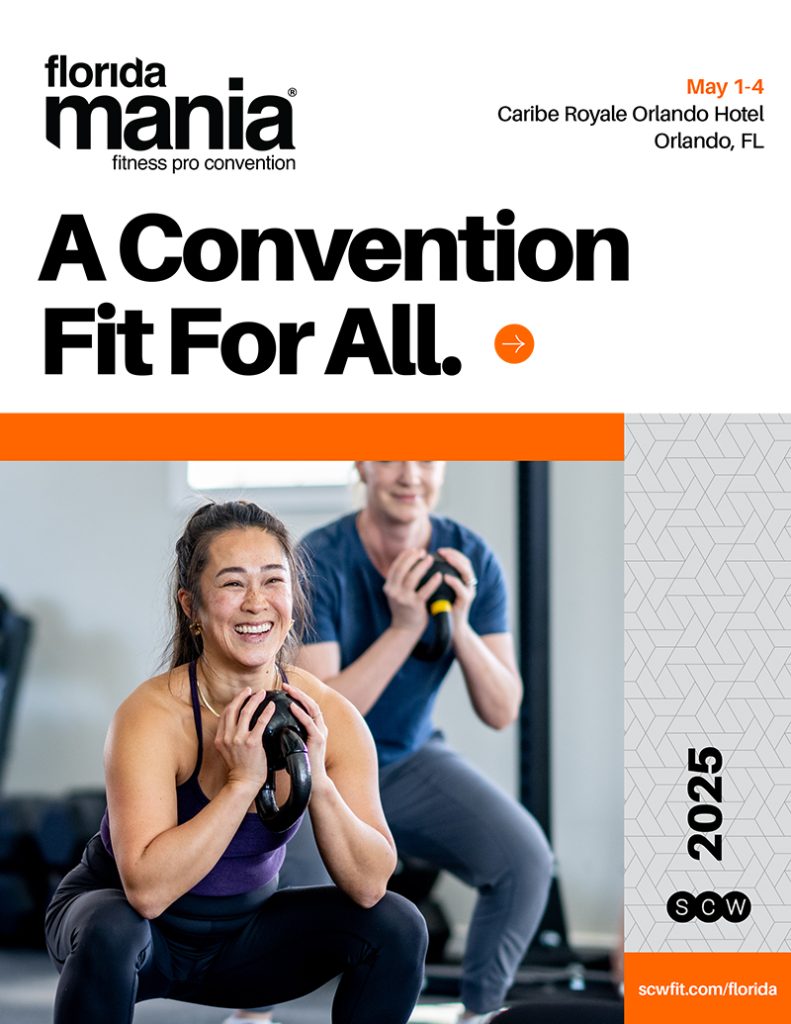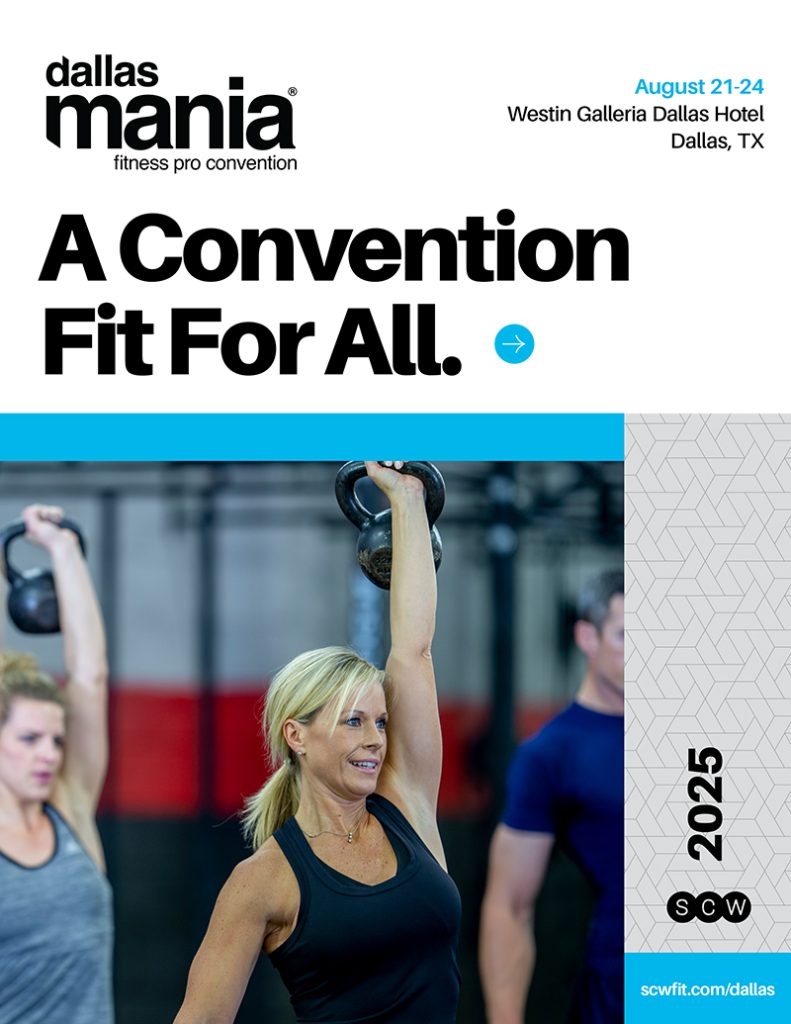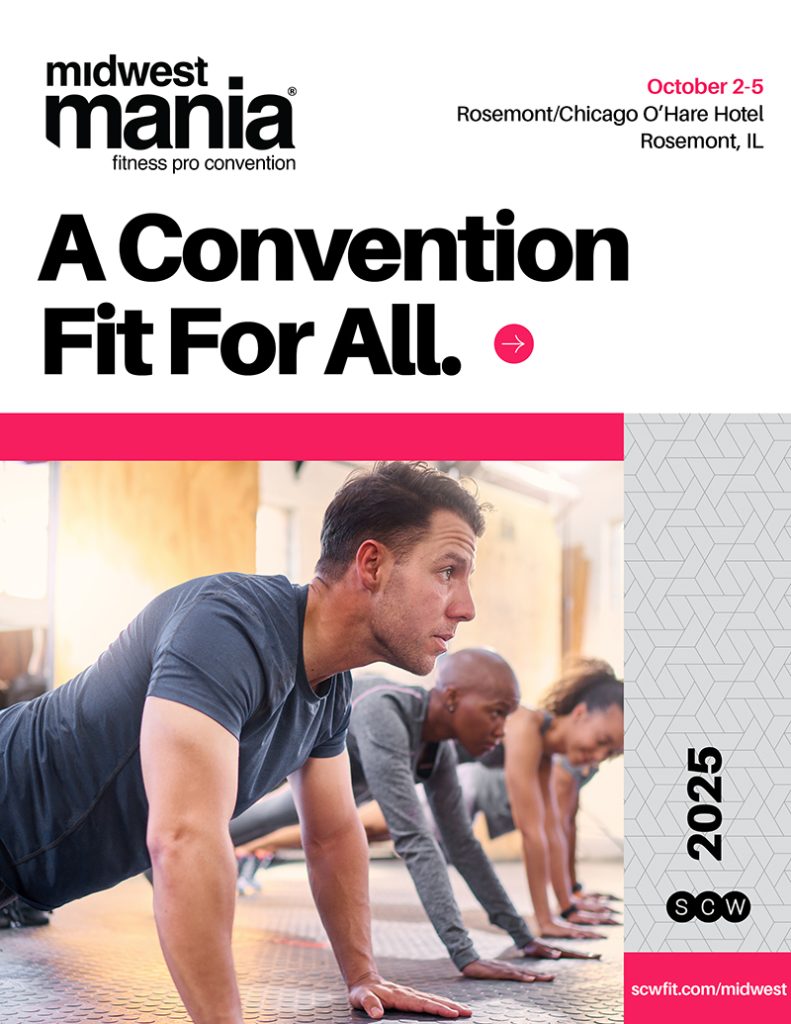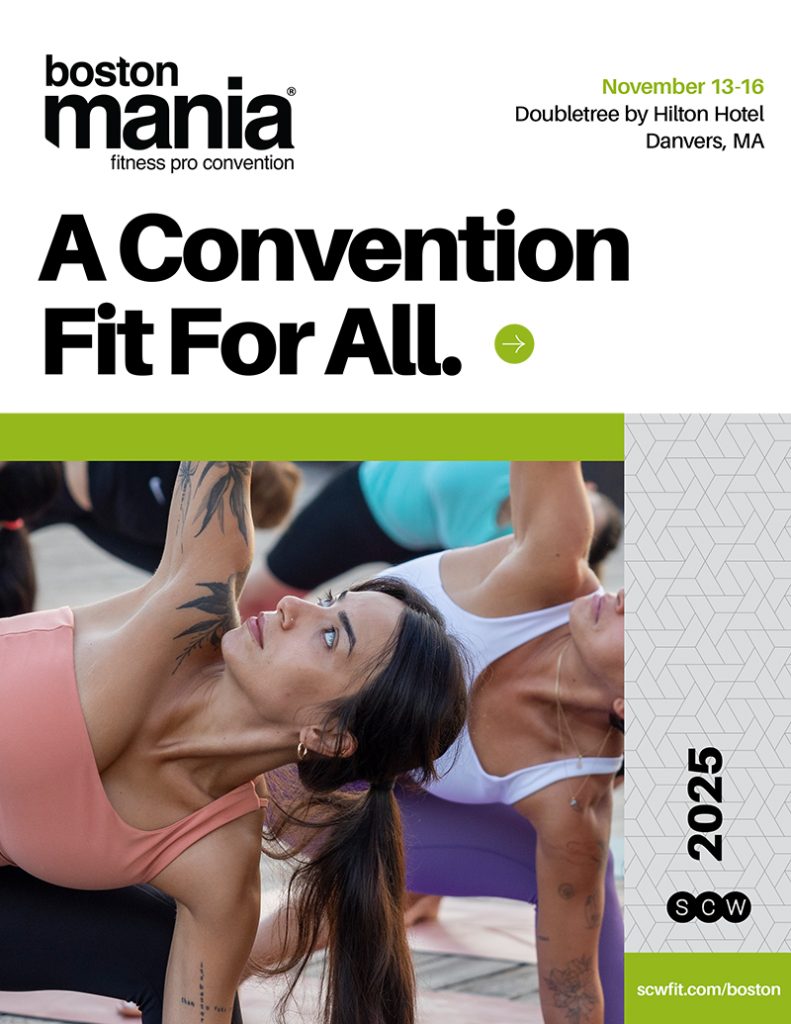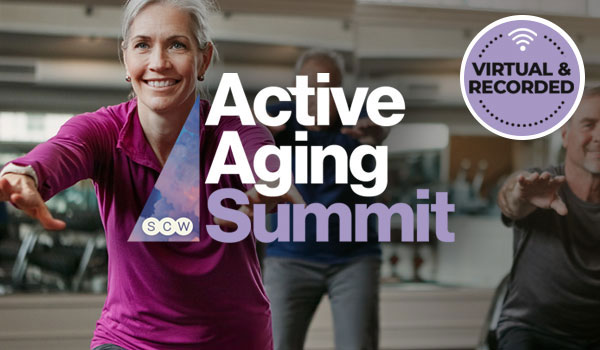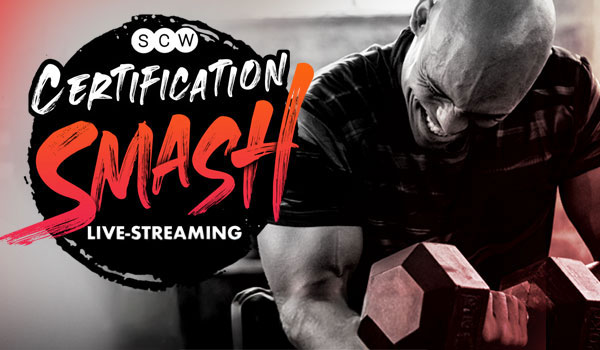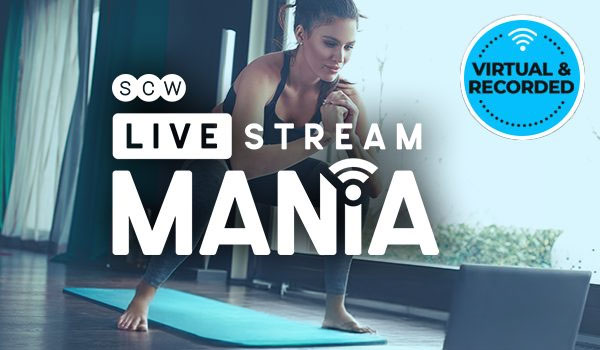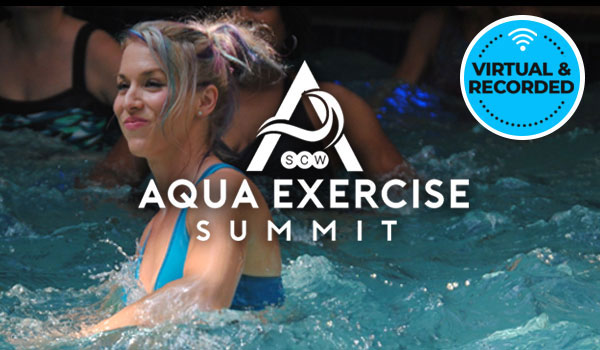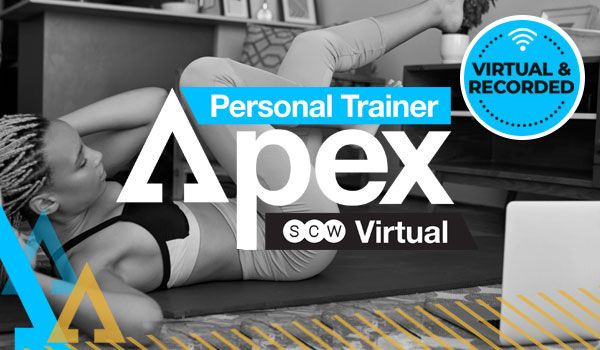
SCW Spotlite: Issue 54

Fitness Trends Report for 2023
The fitness industry is looking up as 2023 begins. While many facilities are still feeling the impact of the COVID-19 pandemic and are navigating challenges like staffing, membership sales, and operational costs; things are trending in a positive direction. As management and leadership set their focus forward, they are looking for what to watch when it comes to programming, trends, and procedures.
Fitness experts across Canada are predicting more focus on personalization, physical and mental wellness, and a return to foundational moves designed to build strength and prepare members for daily life. These predictions come from the canfitpro Fitness Trends Report 2022, which is based on responses from fitness professionals across Canada.
“We’re seeing more interest in the role fitness plays in supporting better physical and mental health and wellness,” said Maureen Hagan, the COO of canfitpro in a press release. “More people than ever are approaching fitness as a tool to take better care of themselves, so there is a renewed focus on the fundamentals like primal movements, active recovery exercises, and unique and effective group fitness classes.”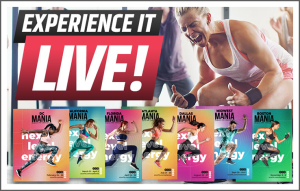
In the U.S., according to the American College of Sports Medicine (ACSM), which recently released its annual international health and fitness professionals survey, wearable technology tops the global fitness trends list of 2023.
“Wearables are certainly not going anywhere,” ACSM Past President Walter R. Thompson, who served as the lead author of the survey, said in the media release. “Not only are these devices becoming more affordable, but wearable data is increasingly being used in clinical decision making so they are continuing to hold their appeal.”
SCW Fitness has also been tracking the trends over the years. Functional training, Active Aging, and Strength Training have been flip-flopping positions for the last three years, but Functional continue to lead the pack. This year, surprisingly, Group Cardio has fallen out of the top 10, while Foam Rolling gained popularity.
“We survey our MANIA attendees every year to see where their interests lie,” says Sara Kooperman, JD, CEO of SCW Fitness. “Their choices help lead the way to planning sessions and event workshops.”
TOP 10 GLOBAL FITNESS TRENDS
| RANK | SCW FITNESS | canfitpro | ACSM |
| 10 | Recovery | Hybrid Fitness | Personal Training |
| 9 | HIIT | HIIT | Employing Certified Fitness Pros |
| 8 | Foam Rolling | Pre-choreographed formats | Exercise for Weight Loss |
| 7 | Personal Training | Fusion-style Group Fitness | HIIT |
| 6 | Exercise Science | Express/Mini Workouts | Outdoor Activities |
| 5 | Nutrition | Active Recovery | Functional Fitness Training |
| 4 | Core Training | Upskilling for Fitness Pros | Fitness Programs for Older Adults |
| 3 | Strength Training | Freestyle Group Fitness | Body Weight Training |
| 2 | Active Aging | Active Aging | Strength Training |
| 1 | Functional Fitness | Functional Fitness | Wearable Technology |
There are definitely differences between the lists and it’s interesting to see that Active Aging, and HIIT made all three lists, while weight loss and outdoor activities only made the ACSM list and pre-choreographed and fusion classes made the canfitpro list.
It’s no surprise functional fitness and wearable technology top the lists. Tracking devices, like watches have now expanded into the ring and patch departments, reading information including sleep habits and movement patterns. Functional health has been ramping up in popularity the last few years. Because of this many facilities have been creating specific spaces designated to this format.
Upskilling for Fitness Professionals is extremely necessary to help with economic pandemic recovery. In 2021, 47.4 million people voluntarily quit their jobs, a phenomenon dubbed “The Great Resignation.” The effects of this are still being felt going into 2023. In fact, the majority of the Club Solutions Advisory Board deemed staffing as one of their greatest challenges.
Beyond compensation, instructors, trainers, and other pros are looking for alternate routes to enhance their careers. A smart approach to attract new staff members and retain your current ones is to invest in them. This can be accomplished in several ways; offering to pay for staff to receive certifications, encouraging them to attend educational roundtables, and paying their way to go to industry events such as the SCW MANIA® Health & Fitness Business Summit, IHRSA Convention and Trade Show, and other networking gatherings.
These top ten lists just crack the surface of the fitness industry iceberg. A major key for both individual and business talent and operation is to continue to have a positive outlook for growth. Flexibility is needed as part of the business model. In-person and online services are a necessary component. Fitness professionals have indicated they are likely to stay in the fitness community for years to come which helps provide stability.
Businesses are looking to technology and innovation to better serve their clients and members. Whether it’s incorporating wearable devices to improve performance, add virtual options, or even integrate AI systems; membership experience is priority.
2023 can be the year. It is up to us as leaders in the fitness industry to keep our fingers on the pulse. Stay aware of resources, opportunities, insights, and engagement to continue to grow and stay strong. We need to depend not just on others, but on ourselves as well.
Happy New Year!!!
 About the Author, Sara Kooperman, JD
About the Author, Sara Kooperman, JD
Sara, CEO of SCW Fitness Education, WATERinMOTION® & S.E.A.T., is a visionary leader who has transformed the fitness education community. A successful business owner and advisor, she is a keynote speaker, published author, podcast presenter, and sought-after industry trailblazer. Sara has a unique ability to share her passion and devotion towards fitness education through her humor, enthusiasm, and her effervescent no-nonsense personality. She serves on the Gold’s Gym Think Tank, was on the Women in Fitness Association Board of Directors and is a proud inductee into the National Fitness Hall of Fame. Sara currently serves on IHRSA’s Headlight Committees for Facility Standards and has left an indelible mark on the fitness industry.

The Mind-Body Connection
Moving well–and often–is paramount to health and fitness. As fitness professionals attempt to motivate their clients to do both and attempt to earnestly coach how to correct poor movement patterns, a familiar and frustrating issue often ensues. Many clients still exhibit an inability to process the instruction and execute the movement properly.
We can begin to solve for this by asking some key questions.
- Working under the assumption that the human body functions in a fully integrated way via four primary fascial slings, can we ensure that these slings are functioning fully and optimally?
- Are there any altered length-tension and/or force-couple relationships affecting osteokinematics?
- Are there any restrictions in scapulothoracic and/or lumbopelvic linkages which limit the ability to execute these movements?
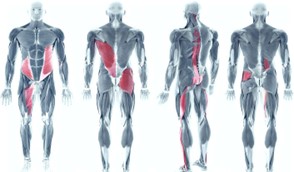 If any issues are identified after asking these questions, there may be a possible breakdown in (1) sensorimotor patterns, and (2) neuromuscular efficiency, which results in (3) poor quality movement patterns. Ultimately, dysfunction may exist within the mind-body connection.
If any issues are identified after asking these questions, there may be a possible breakdown in (1) sensorimotor patterns, and (2) neuromuscular efficiency, which results in (3) poor quality movement patterns. Ultimately, dysfunction may exist within the mind-body connection.
Where Do We Start?
Perhaps the best way to begin tending to this issue is to determine what neuromuscular resources are NOT available, and then design a strategy on how to get them to begin working properly again. Using a case study to illustrate this process via chart A, Paul’s Case Study Profile serves an example for this brain-body physiological reconnection restart process. Quantifiable potential red flags are in chart B.
CHART A: Paul, A Case Study
Paul is a 45-year-old account executive who works from 8 AM to 5 PM, 5 days a week.
- To control his weight and reduce his stress, he takes:
- At least four 45-minute indoor cycling classes per week
- At least four 5-minute cool-down sessions after indoor cycling classes
- Two 60-minute total-body resistance training sessions
CHART B: Paul’s Red Flags
- Paul spends 40 hours per week sitting at his desk.
- When Paul does a free-standing loaded squat, his knees cave in and he has an excessive forward lean.
- He experiences low grade back pain.
- Seated posture transfers to and impacts studio cycling form/technique
- He does not stretch enough and the lack of soft tissue manipulation will impact his mobility/stability balance.
- His various length-tension and force-couple imbalances may potentially impact his strength training outcomes and/or reinforce his imbalances.
Noting that Paul spends 40 hours per week in a seated position (that is 173.4 hours per month) his length-tension and force-couple relationships are out of sync. Sitting for prolonged periods of time creates many soft tissue issues. Some of Paul’s red flags in chart B are attributed to this dominant daily posture and exacerbated when adding load and movement to problematic osteokinematics.
 The Assessment Process
The Assessment Process
It is essential that we quantify Paul’s movement capacity before we load his joints through some key assessments. Chart C identifies assessments used to determine Paul’s physiological capacity to move while joints are loaded.
Chart C: Assessment Grid
Assessment Name | Assessment Objective |
1. Plantarflexion Pattern Assessment | Determine whether or not Paul has adequate dorsiflexion. |
2. Duncan-Ely Flexion/Extension Assessment | Determine whether or not Paul’s hip flexors are tight. |
3. Supine Shoulder Flexion Assessment | Determine whether or not his shoulder flexion capacity compromises his spinal stability. |
4. Active Straight-leg Lower | Determine whether or not Paul’s hip extension capacity compromises his spinal stability. |
- Plantarflexion Pattern Assessment (PPA)
When evaluating Paul’s indoor cycling experience, there were some notable issues in set-up, posture and movement patterns. Paul’s upper body torso posture was poor as he could not maintain a neutral thoracic spine alignment. His pedal stroke was deficient as his knees caved in and he exhibited limited/restricted ankle dorsiflexion. As he increased the resistance his posture and pedal stroke worsened. The PPA quantified that Paul has limited mobility in his ankle.
- Duncan-Ely-Flexion/Extension (DEFE) Assessment
Due to the amount of time spent in a seated position, it is very likely that Paul has tight hip flexors which would be exhibited in this assessment. Even though he is very active throughout the week, his fitness program is problematic as there is no soft tissue manipulation included in the weekly programming, so tighter areas, continue to stay tight. The DEFE Assessment confirmed that Paul has restrictions in his hip flexors.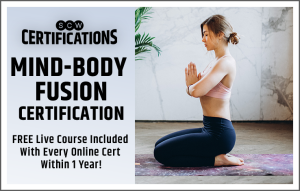
- Supine Shoulder Flexion Assessment (SSFA)
Sitting daily at a desk in front of a computer, creates imbalance in the upper body. His prolonged upper body posture (per figure) may create upper cross syndrome. Classic visual checks include forward positioned head, internally rotated shoulders, and a kyphotic upper back. The SSFA confirmed that he has compensatory patterns in his shoulders, thoracic spine, latissimus dorsi and pectorals.
- Active Straight-leg Lower Test (ASLLT)
Paul may have compromised core stabilization capabilities due to the fact that he has low back pain. Sitting at a desk for a prolonged period of time creates a body position that has transferred to his training patterns—such as an excessive forward lean in his squat. We can assume that his core is unable to perform its proper functions nor stabilize his spine. The ASLLT confirmed that Paul has imbalances in his calves, quadriceps, hips, hamstrings and thoracic spine.
Myofascial Training Phase
After attaining a baseline of issues quantified through the assessment process, the next step is to develop and implement a plan to initially address Paul’s restrictions. This can be done with myofascial techniques using foam rollers, rolling sticks, balls, etc. The goal is to restore soft tissue pliability and create new spaces (“resources”) in the calves, hip flexors, shoulders and lats. Using a “Release-Stretch-Contract (RSC) protocol is an effective way to create balance on force-couple relationships that are not neutral, and it must start with myofascial techniques. In addition to implementing the RSC, core muscles must be trained so they able to stabilize the spine.
For more information about this protocol, read the blog about “Release-Stretch-Contract” at www.mesofitboca.com.
Engage Your Core and Elevate the Brain Stimuli Phase
Once we have “created more space” within which to move, a pattern needs to be practiced within this new space (range of motion) so that a new connection with the brain is established. While ensuring that the core is stabilizing the spine, work to get the ankle, hip and shoulder joints centrated, or sitting in their middle in order to ensure aligned, fluid, and balanced movement. There is evidence that the brain coordinates movement within specific slings of the body, which are lines of musculature that work collectively to produce a result.
When using an elastic band on one or more of the extremities while performing specific exercises, it activates the very strong adductors. Creating this adduction response, also known as a “withdrawal action” of movement toward the midline of the body is ideal. Overall, the brain recognizes this movement as a defense mechanism. When the brain senses danger or harm, and may have experienced a previous trauma, it goes into a “fight or flight” mode. This results in protected postures and movement patterns, (such as the aforementioned) as well as decreased awareness or muscle recruitment, decreased muscle variability, rigidity, poor weight distribution through the feet, etc.
The Strength and Stability Phase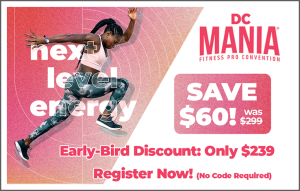
Our quest in core training should lend itself (at some point) to achieving greater core musculature responses with increased challenge. The same should be pursued with adduction or “withdrawal action” while we begin to train strength. In turn, this allows the core to fire not only on the floor, but in standing. If core training is not combined with the humeral and femoral adductors, then it may not be as effective. Including the anterior oblique sling (AOS) integrates core training in a standing position. Once this is achieved, unlimited progressions can be created!
The Optimal Performance Phase: Putting It All Together
Elastic band training serves as a strong central nervous system stimulus and forces systems to adapt. Multiple planes of movement in exercises that would normally be conducted in one plane of movement can now be created as a result. Training variables can always be manipulated: Use lower load (if desired), less impact and less volume, while keeping the intensity high and achieving results quickly as these are time-efficient resistance training programs.
If you are interested in learning more, please join Alison Robbins, the creator of The MESO Method at the SCW DC MANIA® for the two presentations “Make Your “Brain Sweat” and “Movement Training: Keeping it RAW.” Learn how establish strong brain and body connections for optimal movement performance, not only in personal training, but also in a small group and group exercise setting. At Meso Fit Studio in Boca Raton, FL, the research and development lab, The MESO Method™ is used as a total-body conditioning program that integrates strong central nervous system responses within exercise training programs. The emphasis lies in making diagonal patterns balanced with multi-plane, multi-joint, cardiovascular, movement programming that combines everything and requires BrainSweat© and coordination! BrainSweat© gets the brain and body firing together in improved movement patterns for better results.
 About the Author: Alison Robins, BA
About the Author: Alison Robins, BA
Alison Robbins has ultimately found a unique way to bridge the gaps between corrective exercise and higher movement performance in the highly applicable, turn-key program called The MESO Method. As a creator of the program, she blends her innate curiosity of movement science and her background in ballet, yoga, barre, Pilates, and indoor cycling—as well as her avid interest in wholesome nutrition and wellness lifestyles–to help design this holistically integrated restoration/activation training program. Alison has also dedicated time on other initiatives such as opening Meso Fit R&D fitness studio in Boca Raton to introduce various fitness modalities, including The MESO Method. She presents at fitness conventions, such as SCW MANIA® and currently teaches at her studio. Alison is NASM-CPT/CES certified, but states that she is always eager to learn more, especially through her students!

TRAMP CAMP!
Jump Into the Benefits of Rebounding
by Sabrina Ursaner
Want to feel like a kid while getting a tremendous workout and multiple health benefits? Do you remember jumping around on a trampoline as a kid just for the fun of it? Well guess what? It’s time to return to that inner child, but for a good reason, no actually, many good reasons.
The mini trampoline is my favorite piece of exercise equipment. Whether you’re an instructor or participant, the possible uses are endless: from intense cardio sessions to challenging balance work, plyometrics, recovery/rehab, stretching, and so much more. Even barre work and strength training.
We all know that jumping strengthens the leg muscles, but as I mentioned above, reasons to exercise using a mini fitness trampoline include many additional benefits.
First, it’s FUN! So much fun that it almost hides the fact that you’re getting a full-body workout… almost. But trust me, you are. Some of the hidden (and a few not-so-disguised) health benefits of rebounding include:
- Help with lymphatic drainage and eliminating toxins from the body
- Improve balance
- Improve cardio health & circulation
- Improve coordination
- Get more bang for your buck (more effective workout)
- Low impact on joints
- Increase bone density and muscular strength
- Increase energy and mitochondrial function (powerhouse!)
- Kickstart your metabolism
- Strengthen your immune system
- BONUS: Ab workout due to laughing from the fun experience.
And that’s just the tip of the iceberg. NASA astronauts wouldn’t be using mini trampolines if these benefits weren’t the real deal.
You may think, not for me. Jumping only makes me PEE! Well guess what, I thought so too, but actually rebounding can help strengthen your pelvic floor to reduce urinary leaks! Many of these benefits are particularly important for the Active Aging population. Here’s why.
Improve balance
As we age, our risk of falling increases. In fact, falls are the leading cause of injury and death from injury for seniors. According to the CDC, “Every second of every day, an older adult (age 65+) suffers a fall… One out of four older adults will fall each year in the United States, making falls a public health concern, particularly among the aging population.”
Not only is jumping on a rebounder associated with better balance, coordination, and motor skills, but you can actually use the mini fitness trampoline specifically for balance training. The unstable surface, similar to a BOSU trainer, it is great for balance and stability training and the effects are noteworthy. This study found that 14 weeks of mini-trampoline exercises increased seniors’ abilities to regain their balance before falling forward by about 35%! I’ll be showing several ways to use the mini trampoline for balance training in my TRAMP CAMP sessions at DC MANIA®.
Increase bone density and muscular strength with low impact on joints
Speaking of falling (and recovering), as we age, our bones become increasingly brittle and fragile, which could easily lead to increased injury. Not to mention, we also lose muscular strength. Rebounding can improve bone density as well as build strength. How? Lori Lyons, exercise coordinator at Cleveland Clinic, explains that “unlike targeted training, jumping requires the use of multiple muscles. So, when you jump, you use the entire momentum of your body, which forces all of your different muscles to work simultaneously.” The bouncing up and down works everything from your core to leg muscles, back muscles, abs, glutes, and everything in between.
As far as bone density, the rebounding suspension system (whether it’s spring or bungee) and soft trampoline mat absorb much of the impact, allowing you to get a higher intensity workout without the joint pressure. Data suggests that rebounding can help strengthen bones and prevent or reduce the chances of osteoporosis.
This study, the first to investigate bone density and strength in competitive female trampolinists, found that these athletes to have greater bone density at the hip and spine and higher muscle strength in the lower body than their peers.
And NASA compared the effects of jumping on a trampoline to running on a treadmill and found rebounding offered significant benefits to managing bone density in astronauts. (When astronauts spend long periods of time in space, their muscles and bones deteriorate from lack of use.) This low impact activity stimulates new bone production while keeping strain off joints and allowing for safe exercise.
More bang for your buck
Rebounding can also be a more efficient cardiovascular workout than running or other forms of cardio exercise. Studies have shown that 20 minutes of jumping on the trampoline is the equivalent (or even a better cardiovascular workout) than 1 HOUR of jogging or running! Literally up to THREE TIMES more effective. This study by NASA shows that rebounding is 68% more effective than jogging or running (and requires LESS effort). Talk about an efficient workout.
And so much more
Want to learn more about these and the rest of the benefits listed above? Check out any of the sessions with “TRAMP CAMP” in the title at DC MANIA®. I’ll go more in depth about lymphatic drainage and detoxification, balance training on the trampoline, how this can be such a low-impact workout on your joints when you jump so “hard”, along with several other items on the list. 
And perhaps even more important, learn why the mini fitness trampoline is great not only for your “hard core” students (yes, they will get an absolute killer workout), but also for the active aging population and for recovery classes. Lastly, don’t forget to experience the FUN for yourself! It’s guaranteed to be a good time.
“When you jump for joy, no one moves the ground from beneath your feet.” Guess what? Same thing with a mini rebounder. It’s still right there below your feet when you land… so time to find that joy and get JUMPING!!
Which rebounder to use?
It’s important to keep in mind that a mini fitness trampoline, or rebounder, is completely different from jumping on the giant backyard trampolines we used as kids. Rebounders are closer to the ground, designed for individual use, and the emphasis is on bouncing “down,” rather than “up” as done on a giant trampoline. The “bounce down” movement is key to rebounding workouts, and which trampoline model or type you choose to use can have a major impact on your experience.
Some mini fitness trampolines are made with springs, while others use bungees or cords to keep the mat suspended. There are different sized rebounders, different bungee or spring strengths or resistance, folding trampolines, pro models, etc.
I personally always use Jumpsport Fitness Trampolines and have been using them since the day I started rebounding over 6 years ago. I’ve tried many brands of trampoline and can discuss the pros and cons and various differences between them if you are interested in purchasing your own.
Want to try rebounding firsthand? Get registered for DC MANIA®, February 24-26, and join me at a TRAMP CAMP session in person. I’ll also have Jumpsport Trampolines available to purchase at a significant discount.
If you are interested in becoming a licensed Jumpsport Fitness Trampoline instructor, I will be teaching an upcoming Jumpsport Instructor Certification live in New York City this March. Contact me (Sabrina) at @thankfulwarrior on Instagram or stop by the booth in person to register and receive $50 off.
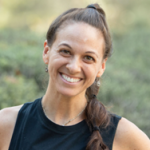 About the Author, Sabrina Ursaner
About the Author, Sabrina Ursaner
Sabrina Ursaner is an author, health & wellness coach, fitness instructor, mindfulness practitioner, and joy seeker. She helps people let go of whatever may be weighing them down, find their wings, and soar. She holds certifications from ACE, AFAA, and NASM among others (200hr RYT, 200hr Kundalini RYT, 100hr CMT). Sabrina is a certified Jumpsport Fitness Instructor and a featured instructor for Jumpsport. She has also been featured and appeared in numerous fitness videos.

The Need to Thrive
by Deborah Rothschild, MS
Meet Kirby, 84 years old and a former athlete. He finds motivating himself to exercise a bit more challenging as he ages. Kirby falls into the tricky category of older active adult. While we know 80- year-olds who enjoy very active lifestyles and 60-year-olds who are very sedentary, there is no clear consensus in America regarding at what age a person is considered to be an older adult. We do know the term covers an enormous amount of people with varying physical abilities and activity levels.
Some older adults may need the support of sitting in a chair to be active and there are currently many fantastic seated exercise class options available. For those who don’t, the workout offerings aren’t quite as available to meet the needs of an aging body to support the ability to thrive. The body will do what it’s trained to do, so it’s up to us as fitness professionals to train active older adults so their bodies will function optimally.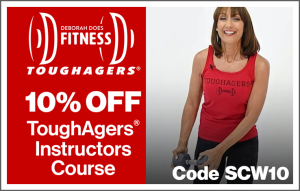
Let’s look at some statistics on older adults. In the United States, according to the U.S. Census Bureau, over 63 million people ages 50-64 and more than 55 million people ages 65+ in 2021 were counted. In 2018, the National Center for Health Statistics surveyed Americans to find out who met the federal physical activity guidelines for aerobic and muscle-strengthening. They found just over 24% of 25–64-year-olds, 16% of 65-74-year-olds, and 10% of those 75 years and older met the guidelines. Considering we are trying to serve so many older adults with a vast array of physical abilities and levels of activity, it is important for the fitness industry to offer class options for this growing population.
How can the fitness industry help older adults continue to enjoy an active lifestyle as long as possible? Here’s the recommended guidelines for weekly physical activity for older adults created in 2019 from the U.S. Department of Health and Human Services:
- At least 150-300 minutes of moderate-intensity (5 or 6 RPE) or 75-150 minutes of vigorous-intensity (7 or 8 RPE) aerobic activity
- Two or more muscle-strengthening activity sessions that are moderate or greater intensity involving all major muscle groups
- Multicomponent physical activity that includes balance training as well as aerobic and muscle-strengthening activities
While discussing how to develop a program for athletes, a 2022 NASM blog article written by Alyssa Parten, recommends applying “sports-specific” training. This is known as the SAID principle (Specific Adaptations to Imposed Demands) which is defined as. “…the fundamental concept that the activities and/or training we participate (in), will induce highly specific adaptations related to the specific demands we consistently encounter.” The article describes a “sports-specific” program as that which, “… takes into consideration the primary muscles, movement patterns, contraction phases, and joint actions observed during the sport in question.” Therefore, we can apply the SAID principle to active older adults by mimicking activities they engage in. Specifically, we can offer functional classes with cardio movements that are easy to follow and athletic based, balance training that is task specific and dual-task oriented, and finally resistance training that imitates daily behaviors and offers multi-joint and multi-planar variations. This is the foundation of ToughAgers® classes.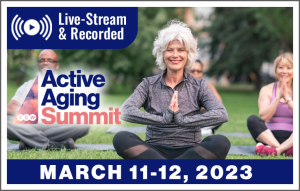
Let’s go back to Kirby. He is an active participant of ToughAgers® and is a perfect example of an active older adult. A couple of years ago he wrote a testimonial, “Years ago, I was quite athletic,
and I have strived to stay in shape my entire life. The older I get, the more difficult that has become, and I realized that I needed some help to keep me motivated to get the exercise I need to maintain good health. As a result, I joined a senior fitness class that was given regularly at the tennis club where I was a member….” Keeping in mind that Kirby still plays tennis, rides his bike, goes on long walks on the mountain roads by his house, is very competitive, and still thinks of himself as an athlete, do you think he would or should have started attending that senior fitness class if it was a chair exercise class? How can we apply the guidelines specifically to benefit active older adults? What if we followed Kirby’s lead and think of active older adults as athletes? This is why I created ToughAgers®. These safe and effective classes are designed to provide everything active older adults need for overall fitness by including low impact cardio, interval, balance, resistance, core, and flexibility training. I have seen first-hand the benefits gained from this format.
Sound intriguing? You too can become a ToughAgers® Instructor. Join me in learning to help more active older adults continue to thrive. This 5-module narrated training includes every aspect needed to teach active seniors including over 155 detailed exercise examples. As
Kirby states in his testimonial, “I strongly believe that anyone, but especially those of us who are retired, would benefit greatly.” For more information and to personally meet me, register today for the upcoming SCW Active Aging Summit, March 11-12 or at an upcoming SCW MANIA®.
 About the Author, Deborah Rothschild, MS
About the Author, Deborah Rothschild, MS
Deborah Rothschild, M.S., NASM CPT, ACE CPT, AFAA CGFI is the owner of Tough Agers LLC. She has worked in the fitness industry since 2003 holding positions from Trainer to Sports and Wellness Director. Deborah is passionate about helping support people along their fitness and wellness pathways. Starting off as a Certified Personal Trainer in 2003, she has worked as a Group Fitness Instructor, Pilates Instructor, Lead Trainer, Group Fitness & Pilates Manager, Fitness Director, and Sports & Wellness Director. Deborah has a M.S. in Exercise Science from CALU. Her Personal Training Certifications are from NASM & ACE with specializations in Senior Fitness & Cancer Recovery. Deborah holds an AFAA CGFI along with numerous specialty certifications. Currently, she is the owner of Tough Agers LLC which specializes in older adult fitness.
Special 1-Hour FREE Webinar
Group Ex: A Positive Outlook for the New Year
“Webinar of the Year!”
“Not to Miss Webinar!”
“The Best Hour Spent with Top Industry CEOs, COOs, Founders, and Owners!”
“Sara Kooperman, JD, Mo Hagan, Amy Thompson, Janice Jaicks, & Jamie Nicholls are in the (virtual) house!”
Mark your calendars for Thursday, January 26 @ 7pm ET.
SCW Fitness, canfitpro, IDEA, FitnessFest, & Fitness Conventions Inc. all join forces to bring you this webinar chocked full of insight and inspiration.
Now that our fitness facilities have reopened, there continues to be a shortage of group ex instructors and lower group ex attendance. Join our panel of experts for this special hour-long webinar as they examine the future of group exercise: the programs, the people, and the profits. The discussion includes current & developing trends, incorporating virtual components, hiring qualifications, and leveraging instructors into profitable formats.
Sara Kooperman, JD, is the CEO of SCW Fitness Education, WATERinMOTION®, and S.E.A.T.
Maureen (Mo) Hagan is chief operating officer for Canfitpro – Canada’s leading fitness authority. She is a global fitness ambassador and has been recognized for her work in fitness that spans over three decades. Mo is one of Canada’s 2020 Top 10 power women, a #1 best-selling author, member of the Board of Directors for Prescription to Get Active, and a Reebok sponsored athlete.
Amy Boone Thompson is the CEO and Owner of IDEA Health & Fitness Association abd has amassed nearly three decades as a career fitness professional, wellness advocate and business owner/leader. She was formerly vice president and general manager and now as owner and chief executive officer, will continue to lead IDEA into a new generation of fitness and wellness.
Janice Jaicks is the founder and CEO of FitnessFest, AquaCon, and Desert Swim School, all of which have been in operation and incorporated since 1990. She has been teaching water fitness and training instructors for nearly three decades and launched her own Aqua Progressions Certification Program in 2019. Janice is certified through AEA, ACE, FitnessFest, and the Arthritis Foundation, and has enjoyed presenting aqua workshops for IDEA, SCW, and her own FitnessFest and AquaCon conferences.
Jamie Nicholls is the CEO of Fitness Conventions Inc. Jamie has 22 years of experience in the fitness industry and is an ACE Certified Group Fitness Instructor. She has been involved with DCAC Fitness Conventions since 2001. She became co-owner of the business in 2011 and in 2019, she became the CEO. She resides in the Richmond, VA area and teaches a variety of group exercise classes at the local YMCA.

Hit the Reset Button!
by Kylie Ross
Everybody has a story and EVERY BODY has a story! –Kylie Ross
Eating in 2023
With all the changes we have incurred since 2020, our bodies have been in a sedentary position more than usual. Now it is time to break out of our cocoon and get moving!
Your foundation is key! Get your annual physical with blood work, take your vitamins, drink plenty of water, and eat a rainbow of vegetables. The food you consume is fuel for your body’s energy and metabolism. Rest is also a key component to your health.
Now it’s time to incorporate physical activity. Crank up that treadmill and go hard for 20 minutes with an added set of weights to build strength. Get in 1-2 proteins, 1 carb, and 1-2 veggies in each meal. Balance is another key to a healthy reset
An example of a balanced meal includes: 3oz grilled salmon, 1 cup of spinach, and rice. Boost your mornings with a delicious protein shake with your favorite chocolate protein powder (mine is Vega and Pure Protein), cashew milk, strawberry, oats, scoop of creatine and spinach.
Another key component to healthy nutrition is reducing your plate size. Use a saucer-size plate for your meals. This will cause you to consume smaller servings. Once you build your foundation and ‘hit the reset button’, you will feel like you’re heading in the right direction.
APPLE PIE BOWL
My favorite food is an Apple Pie bowl. So here’s a healthy version with a hope that it becomes your favorite too.
INGREDIENTS:
- 3/4 cup Greek yogurt
- 1 medium apple – chopped
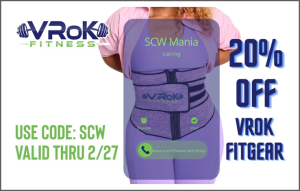
- ¼ tsp butter
- ¼ tsp vanilla extract
- ½ tsp and 1 tsp molasses Monk fruit sugar substitute
- 2 tbsp almond flour
- 2 tbsp almond milk
- 1 dash ground cinnamon
DIRECTIONS:
Mix apple, Monk fruit sugar, vanilla, and cinnamon in a bowl and heat up. Stir flour and molasses and press with fork until crumbles. Add yogurt, milk, and butter to the bowl and stir! ENJOY!
 About the Author, Kylie Ross
About the Author, Kylie Ross
Kylie Ross is Owner of VK Professional Services and VRoK Fitness. VK Professional Services offers tax planning and preparation, bookkeeping, notary, website design and business consulting. Kylie Ross is a Certified Personal Trainer from SCW, Nutrition Coach and Bariatric Health Expert. She has been in both industries professionally for almost 6 years. She had Gastric Bypass 11 years and has worked hard to keep it off; now she assists others on how to prevent obesity-driven conditions via virtual and mobile fitness and nutrition guidance.

Keep Going
A new year is here! We all start excited and super pumped. We go grocery shopping to find healthy foods, we buy shoes, maybe even buy new fitness outfits…. but three-four weeks in we’re stuck and unmotivated. This is where the excitement dives, the pounds aren’t falling off as fast as they were, you’re sore often, and you’d rather go back to your old habits.
This is when you need to call in for help…
This process will help you analyze what you’re doing and get extra help where you need it.
FIRST, DO YOU LIKE IT?
I have always been a strong believer that workouts should be fun and bring joy. They should never be a chore. For me, I like challenge and changing it up. That is when I see results. Look at your current plan. Is there something about it that you hate doing? Something that you find boring? Something that you dread doing? Then STOP!
No, this doesn’t mean you get to just stop working out. For everything you take off, you have to find a replacement. If you don’t like to run, then maybe swim? Or take a fast-paced walk? For me, hiking is my escape outside of the gym. Group fitness classes is also my thing. There’s something about working out in groups of people that are like minded and share same goals as you. Having a community is so much fun!
Just working out, for the sake of working out, is not something most people can do. Yes, once you’ve gotten in a habit, it’s so much easier to keep it going, but building the routine requires more than that to keep you going.
You need to spend the time to find your greater WHY.
I’m not saying you need to find your life’s purpose (although it’s never a bad idea to spend time reflecting on that,) but you need to find a reason to stay active and the “why” for working out in the first place.
Maybe:
- You have a few pounds to lose.
- You’re trying to get off some medication.
- You’re working out to help your mental health.
There are a lot of reasons, but just going to the gym to “feel good” is rarely a good enough reason for most people. I train a lot of people, and although it sounds nice to have that as a reason, it’s rarely enough. You need a stronger purpose to pull you through those hard times when you want to throw in the towel. We all need a purpose.
CELEBRATE YOUR LITTLE VICTORIES!
First mistake; don’t use the scale to measure progress. There are a million reasons that your body could have a different scale outcome than what you were expecting. Instead, keep track in other ways. Stay committed to workouts that you accomplished during the week, drink enough water, not going thru the drive-thru, having less sugar, are just some examples.
Try taking pictures of the visual changes. Pictures are SO helpful! Even if the scale doesn’t seem to be moving, you can physically see how your body is changing. Body measurement shows what’s growing and shrinking. Even if you can’t see the gains, measurements don’t lie.
Try all these things before you throw in the towel on your new fitness plan. Never forget that mental strength is the most important strength of all.
STAY STRONG AND KEEP GOING!
 About the Author, Rossie Ballard
About the Author, Rossie Ballard
Rossie Ballard, CFI, CPT, (pronounced Ro-sie) is a Fitness and Health Coach, Master Trainer, and Creator of F.I.T. Warriors Studio where she offers in person and online workouts. During Covid she started presenting a weekly TV workout, “Home Workouts with Rossie”, inspiring people to get moving during lock down and currently continues the program. Rossie has been in this industry helping people get stronger, fitter, and healthier for 20 years. Growing up as a shy youngster, she found her confidence and niche at 16, when asked to lead a fitness class when the instructor didn’t show up. Rossie studied Business and Tourism Administration but her passion for fitness has never let up throughout her life. Last year, Rossie auditioned and won SCW Fitness Idol at California MANIA®.
Looking to Hire? SCW Can Help!
In Need of Teachers, Trainers, Directors, or Managers? SCW’s new FREE JOB BOARD is supporting the industry’s need for qualified fitness pros.
Best of all there is NO COST to you. We will post your openings in all three of our monthly e-newsletters: Spotlite, Health & Fitness Business News, and Tidal Waves which are emailed out to tens of thousands of fitness professionals teaching and training in all formats along with managers and directors at all fitness facilities: big box, gyms, boutique, studios, not for profits and independent centers.
 We’re always looking for great content highlighting the newest things in the world of fitness. Please submit your article directly to editor@scwfit.com for immediate consideration!
We’re always looking for great content highlighting the newest things in the world of fitness. Please submit your article directly to editor@scwfit.com for immediate consideration! Spotlite, April 9, 2025
Spotlite, January 5, 2025
Spotlite, November 11, 2024
Spotlite, September 27, 2024
Spotlite, August 31, 2024
Spotlite, July 26, 2024
Spotlite, June 22, 2024
Spotlite, May 23, 2024
Spotlite, April 26, 2024
Spotlite, March 22, 2024
Spotlite, February 19, 2024
Spotlite, January 20, 2024
Spotlite, December 21, 2023
Spotlite, November 18, 2023
Spotlite, October 22, 2023
Spotlite, September 21, 2023
Spotlite, August 19, 2023
Spotlite, July 19, 2023
Spotlite, June 19, 2023
Spotlite, May 18, 2023
Spotlite, April 21, 2023
Spotlite, March 28, 2023
Spotlite, February 18, 2023
Spotlite, January 21, 2023
Spotlite, December 16, 2022
Spotlite, November 19, 2022
Spotlite, October 22, 2022
Spotlite, September 24, 2022
Spotlite, August 23, 2022
Spotlite, July 22, 2022
Spotlite, June 20, 2022
Spotlite, May 18, 2022
Spotlite, April 20, 2022
Spotlite, March 25, 2022
Spotlite, February 17, 2022
Spotlite, January 14, 2022
Spotlite, December 17, 2021
Spotlite, November 18, 2021
Spotlite, October 25, 2021
Spotlite, September 16, 2021
Spotlite, August 9, 2021
Spotlite, July 10, 2021
Spotlite, June 8, 2021
Spotlite, May 14, 2021
Spotlite, April 30, 2021
Spotlite, March 30, 2021
Spotlite, February 23, 2021
Spotlite, January 20, 2021
Hyatt Regency Dulles
Herndon, VA
Hyatt Regency SF Airport
Burlingame, CA
Caribe Royale Orlando
Orlando, FL
May 1-4, 2025
May 2026
Grand Hyatt Atlanta Buckhead
Atlanta, GA
July 24-27, 2025
July 2026
Westin Galleria Dallas
Dallas, TX
August 21-24, 2025
August 28-30 2026
Rosemont Chicago O’Hare
Rosemont, IL
Oct. 2-5, 2025
Oct. 2-4 2026
Doubletree by Hilton
Danvers, MA
Nov. 13-16, 2025
Nov. 13-15, 2026

